Road trips to discover Andalusia and Morocco
Embark on an incredible road trip through the Spanish region of Andalusia on your way to Morocco and discover wonderful cities with their rich Islamic heritage. Travel Andalusia by car and experience 800 years of amazing Islamic history and architecture in what was considered a golden age for innovation in technology and science. Morocco, which borders the Atlantic Ocean, harmonises with the Sahara and shelters the Atlas Mountains, awakening the adventurer hidden in each of our souls. Follow our recommended routes for an authentic taste of the beauty of Andalusia and Morocco.
In this article, we offer two alternative routes for your road trip.
Itinerary 1 - The Imperial Road
The first route takes the path through the Spanish region of Andalusia - with amazing Islamic history and architecture, to the imperial cities of Morocco - with traces of opulence from ancient times and exciting off-the-beaten-path detours that reveal hidden treasures.
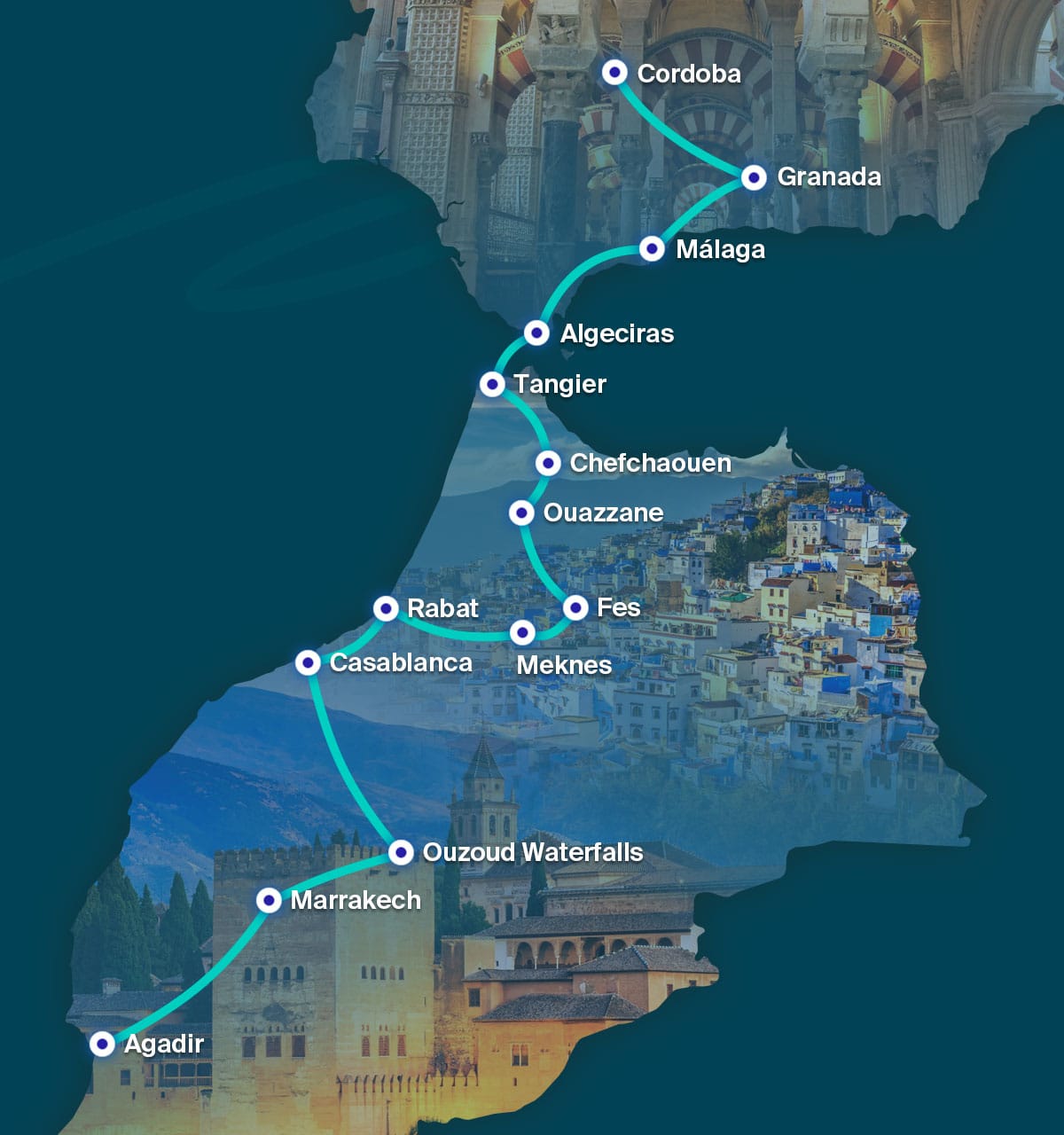
- Cordoba → Granada
- Granada → Malaga
- Malaga → Algeciras→ Tangier
- Tangier → Chefchaouen
- Chefchaouen → stop in Ouazzane → Fes
- Fes → stop in Meknes → Rabat
- Rabat → Casablanca
- Casablanca → stop at Ouzoud Waterfalls → Marrakech
- Marrakech → Agadir
Begin your journey in Cordoba, a city famous for its Moorish heritage. You can reserve a rental car online or at a local rental agency in Cordoba. Ensure that the rental company allows international travel with the vehicle, as not all agencies permit cars to be taken out of the country. You may also need to purchase additional insurance for driving in Morocco.
Cordoba
One of the most impressive architectural masterpieces of the region's Muslim rulers and a UNESCO World Heritage Site welcomes you to Cordoba: the Great Mosque of Córdoba, also known as the Mezquita-Catedral de Córdoba. Throughout history, this masterpiece has been a Roman temple, becoming a Christian basilica, then a mosque (the world's third largest mosque) and finally a cathedral. This impressive monument testifies to the Muslim presence in Spain.

Cordoba → Granada
Your next stop is Granada, a 2 hour and 30 minute drive from Cordoba. Enjoy the scenic journey through picturesque Andalusian countryside with rolling hills, olive groves, and the Sierra Nevada mountains gradually appearing on the horizon as you approach Granada.
Granada
The city of Granada is the jewel of the region. The iconic Alhambra Castle is undoubtedly the highlight of the city and the region. The imposing eighth-century-old palace rises on a rocky hill in reddish tones. It is the only royal centre remaining of the Nasrid Dynasty, the last Islamic kingdom in Western Europe, and a great example of astonishing Moorish architecture. Be sure to try some tapas, which Granada is also known for!
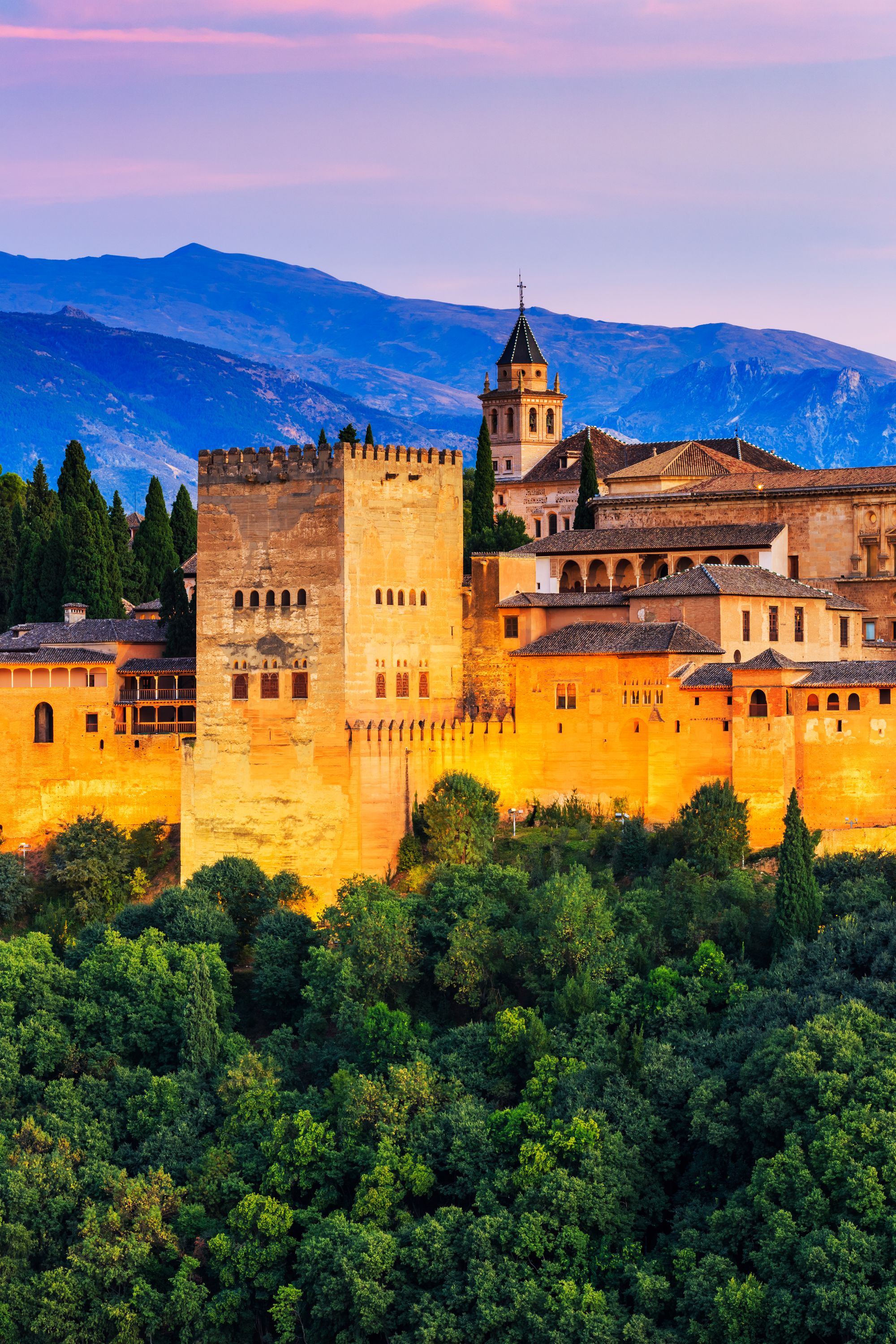
Granada → Malaga
Continue your road trip south towards Malaga, a 1 hour and 30 minute drive from Granada. This section of the drive offers more mountainous scenery as you descend towards the coast. As you approach Malaga, the Mediterranean Sea comes into view, marking the transition from inland Andalusia to the Costa del Sol.
Malaga
This vibrant city is known for its rich history, stunning beaches, and lively cultural scene. Visit the Alcazaba, an ancient Moorish fortress with panoramic views and one of the largest Arab fortresses in Andalusia.

Also walk through the botanical garden La Concepcion, one of the most beautiful landscaped gardens in Spain with over one hundred and fifty years of history. It is a true oasis of calm with more than 25,000 plants of 2,000 different species, fountains and waterfalls. Since Malaga is the birthplace of Pablo Picasso, the Picasso Museum is a must-see for art lovers.
For your night on the Costa del Sol, we recommend the Alanda Marbella Hotel in Marbella and the Costa del Sol Hotel in Torremolinos.
To find out more about things to do and see in southern Spain, read our dedicated article : Road trips with Halalbooking: Discover the Umayyad heritage of Andalusia.
Malaga → Algeciras → Tangier
Time to change continents! Head to Algeciras (about 1 hour and 30 minutes from Malaga) to take the ferry to Tangier for a symbolic crossing from Europe to Africa. The ferry crossing takes around 1 hour and 30 minutes. The port of Tanger-Med is located outside of the city and offers direct access to the motorways.
Tangier
Your adventure begins in Tangier, a city that was a cultural melting pot and the centre of a rivalry between the Spanish, Portuguese, French, British and Americans. Its international identity and less significant reputation as a tourist attraction than that of its royal counterparts offers an observation into Moroccan heritage.
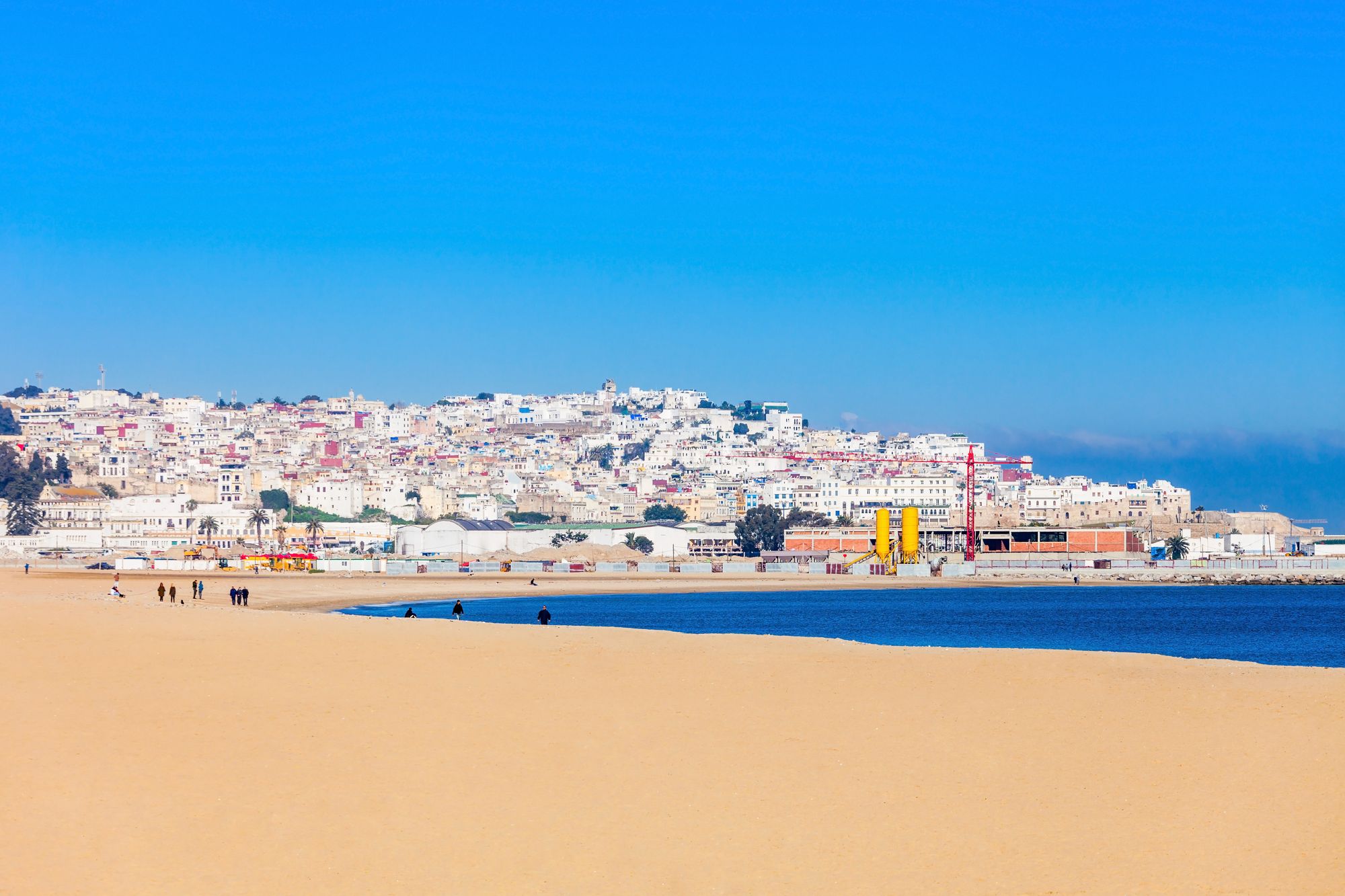
The main attractions in Tangier are the Kasbah and its Museum and Dar al-Makhzen, former residences of the sultans.

Learn about Christian heritage by visiting the Anglican Church of St. Andrew with its Moorish style and English and Gibraltarian ties, as well as the Church of the Immaculate Conception, a Spanish church that accommodated the Christian population during the Mandate. For a contemporary touch, take a seat at Café Hafa, which overlooks the Bay of Tangier and has also hosted celebrities like the Rolling Stones and the Beatles.
Tangier → Chefchaouen
After a two or three day stay in Tangier, take the road for about 2 hrs through the Rif mountains to Chefchaouen, the "blue pearl" of Morocco, an ocean of blue buildings.
Chefchaouen
Built inside Morocco against the threat from the Portuguese during the Renaissance period, the city prides itself on its character shaped by the immigration of Jews and Moors during the Spanish reconquest.
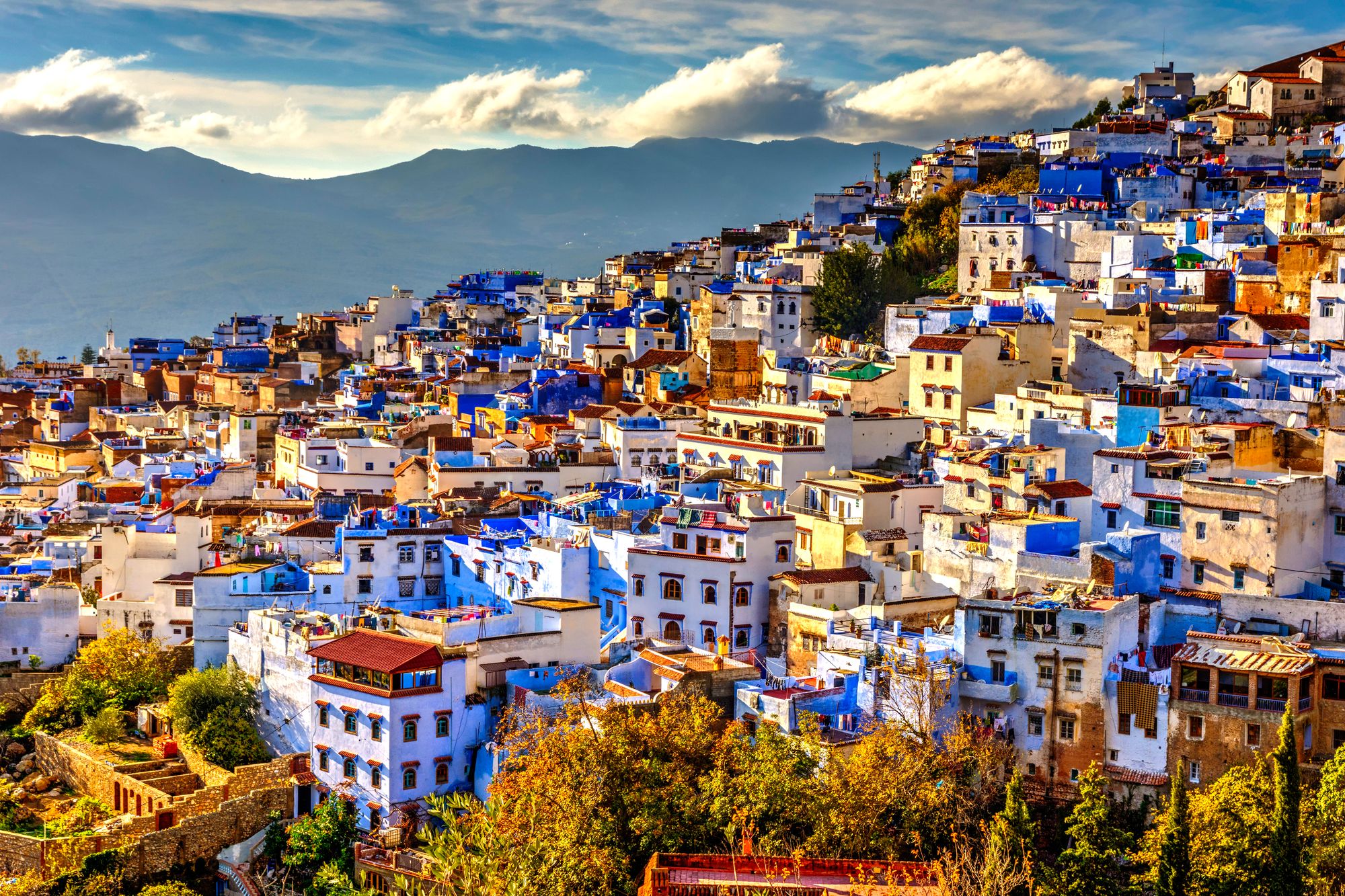
Enter the Medina of Chefchaouen, covered in blue paint to inspire spirituality and recognition of heaven and paradise. The Ethnographic Museum encompasses the crafts, traditions and popular art of Chefchaouen. In the centre of the medina is the Great Mosque which frames the Place Outa el Hammam. The Place El Haouta is less known but a lovely, charming place of simple beauty.
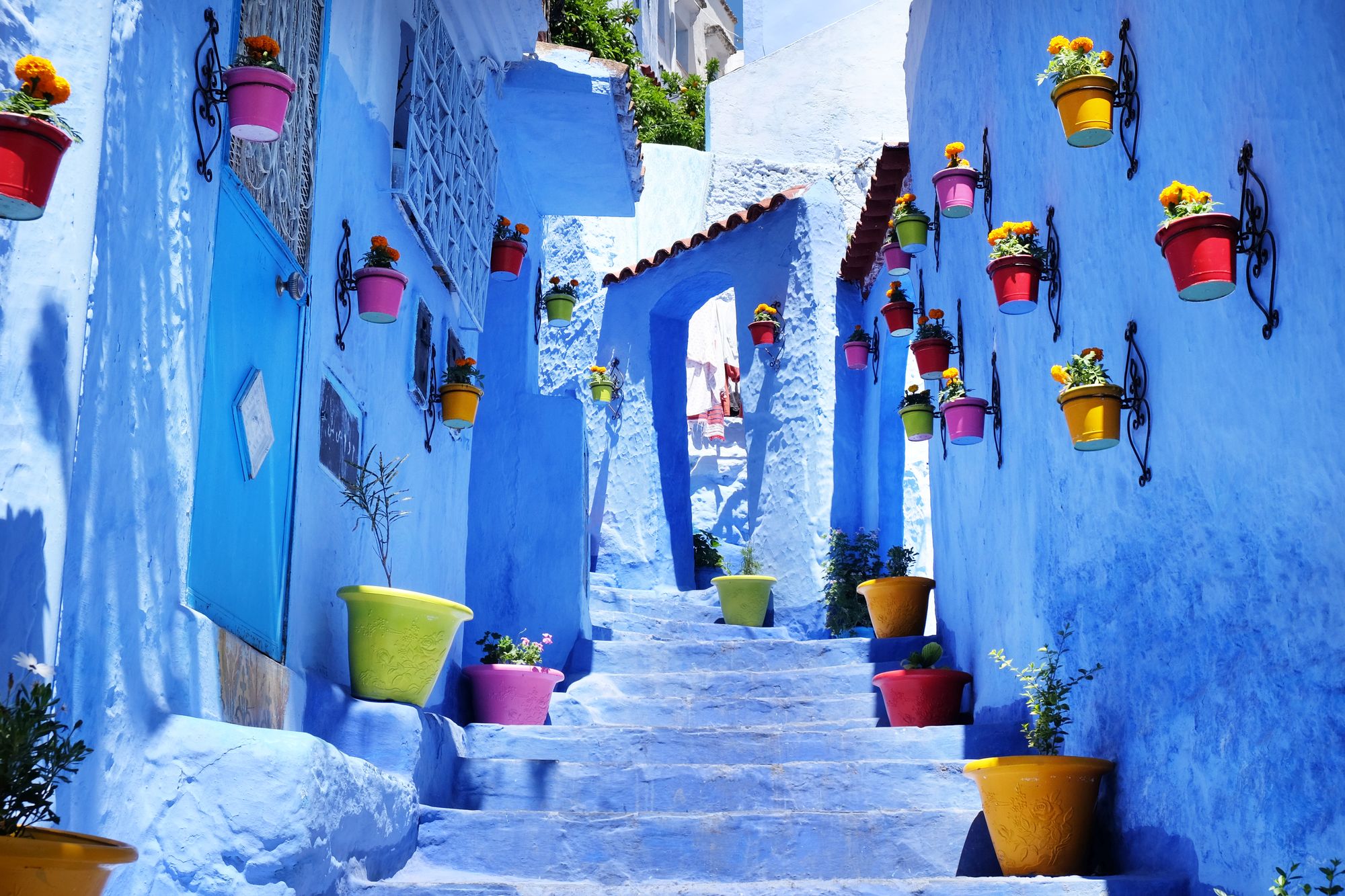
Chefchaouen → recommended stop in Ouezzane → Fes
After appreciating the brilliance of the blue pearl of Morocco, take the road towards Fes, with a recommended stop in Ouezzane, a 1 hour and 30 minute drive from Chefchaouen.
Ouezzane
Explore the historic medina, the diverse cultural heritage and enjoy the serene atmosphere of the surrounding countryside. Known for its rich cultural heritage, religious significance, and picturesque landscapes, this historic village features charming, narrow streets and traditional whitewashed buildings. Surrounded by picturesque olive groves, Ouezzane also produces some of Morocco's finest olive oils.
One day is sufficient to visit the city. Hit the road for a 2 hour and 30 minute drive to Fes.
Fes
The city’s architecture is a blend of Islamic, Andalusian, and Moroccan styles. Fes was once a centre of learning and intellectuality and is home to the world’s oldest continuously operating university, the University of Al Quaraouiyine. The craft also blossomed with the immigration from different cultures. Visit the madrasas (Muslim schools) Bou Inania Madrasa, Madrasa al-Attarine and Madrasa as-Sahrij for a taste of the heyday of Morocco.
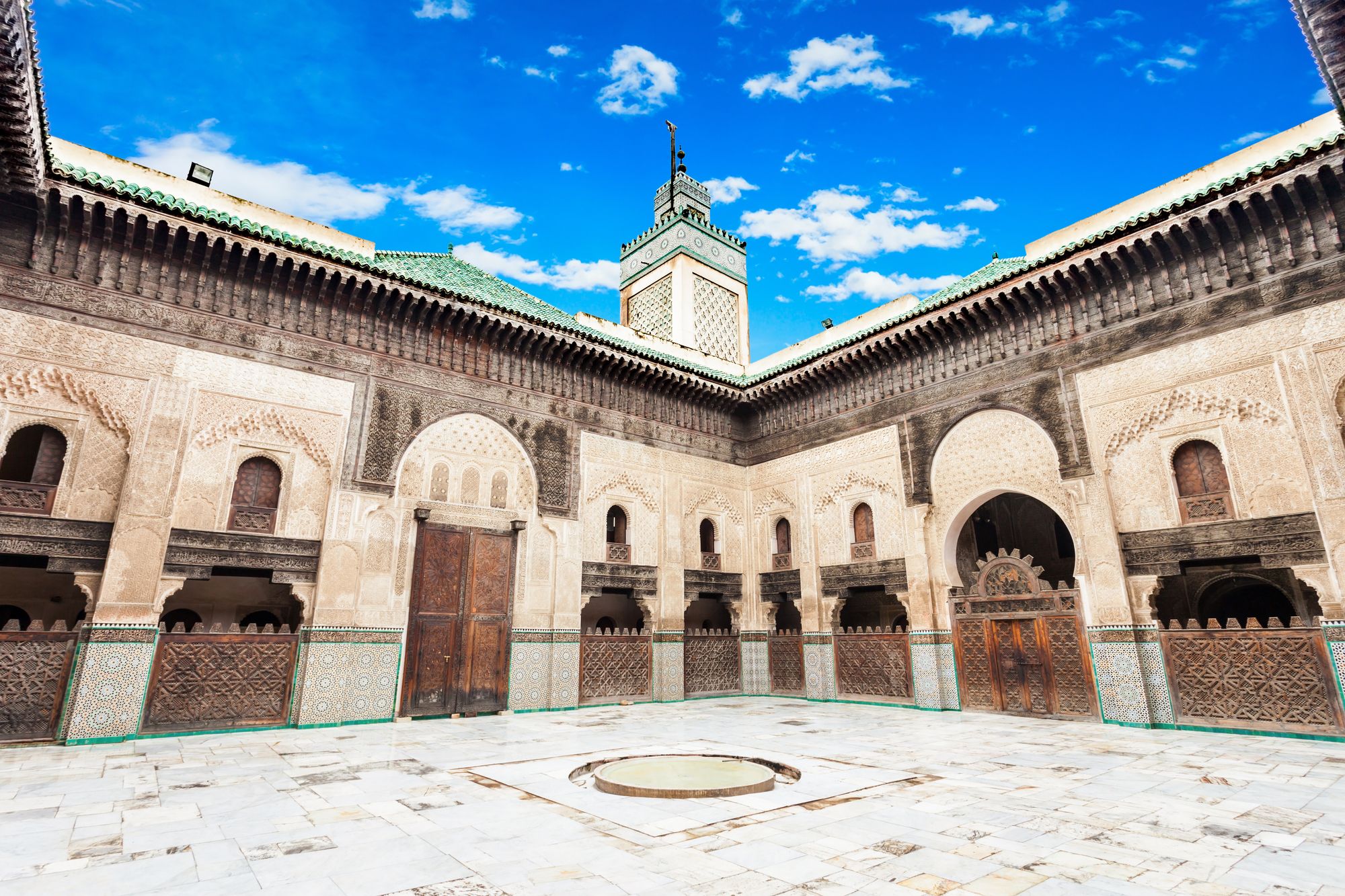
Fez today consists of three districts, each of which can be assigned to an era of the city's history:
- Fes el-Bali (Medina of Fes), a UNESCO World Heritage site, is one of the largest and most well-preserved mediaeval cities in the world. Dating from the 8th century, the medina was founded by the first king of Morocco. Immerse yourself in traditional Moroccan life and explore the labyrinth of narrow streets, bustling souks and historic mosques.
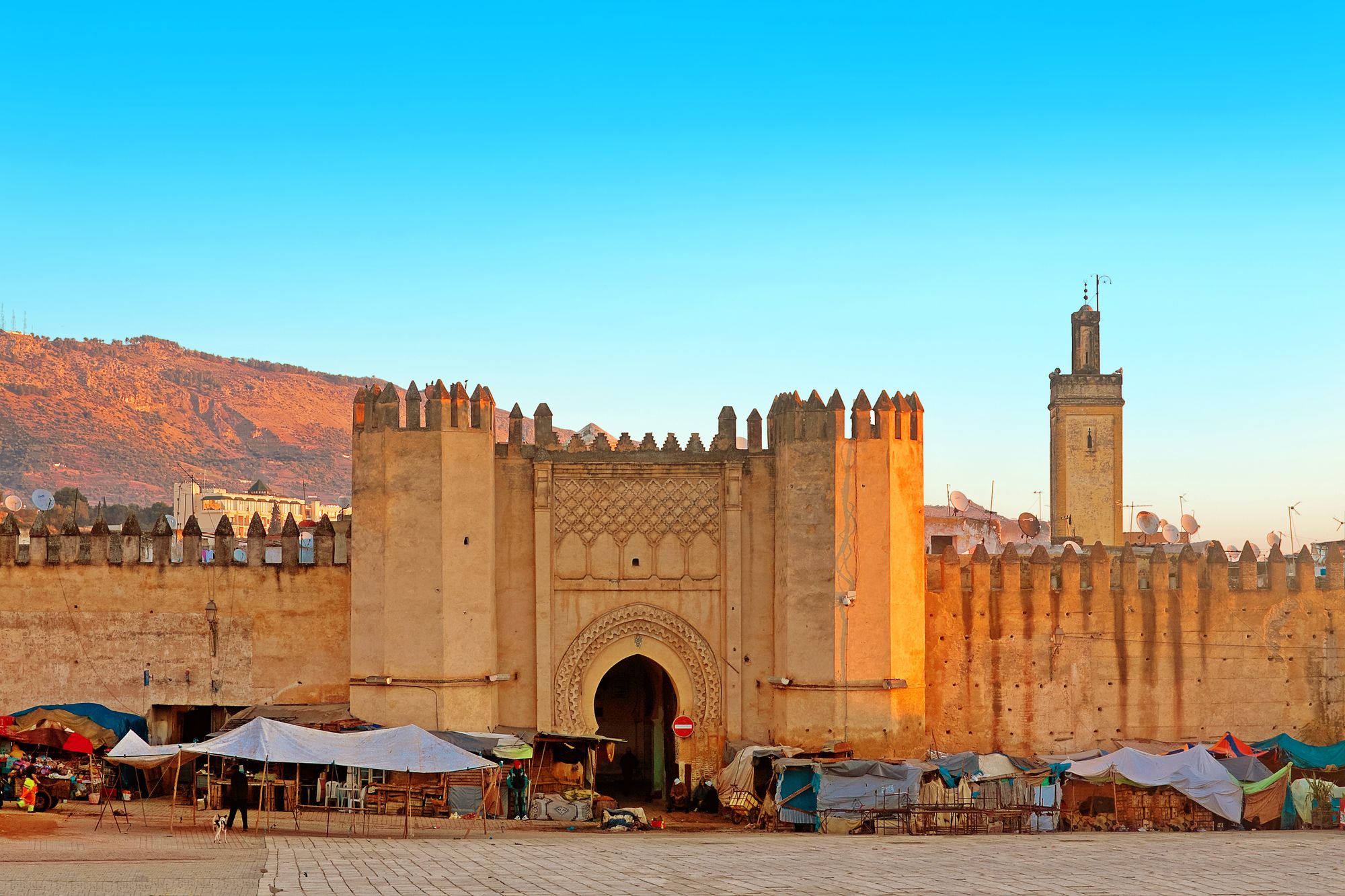
- Fes el-Jadid (New Fes), the Renaissance medina dating from the 13th century, whose imperial and tangible splendour amazes the visitor. It is home of the Mellah (Jewish Quarter) and Dar al-Makhzen, a huge Royal Palace. The newer part of the city offers a glimpse into the city’s more contemporary side, with wide avenues, modern shops, and a more relaxed atmosphere.
- The New Town, created by the French in the 20th century, links its modern history with its troubled past with its colonial origins.
Fes → recommended stop in Meknes → Rabat
After a few days in Fes, the Imperial Road will take you to Rabat, less than a three-hour drive away. We recommend a stopover in Meknes, the "Versailles of Morocco", only 50 minutes by car from Fes.
Meknes
Meknes is a romantic city that will enchant you with its spiritual and regal character: the Mausoleum of Moulay Ismail is a site of artistic reverie and the Bab Berdieyinne Mosque highlights the restoration of its historic minaret. The opulence of Meknes is especially felt at the monumental gate, Bab Al-Mansour and in the cladding of the Mausoleum of Moulay Ismail.
An understanding of Meknes’s reputation is not complete without visiting the Roman ruins of Volubilis. Located just a short drive from Meknes, this UNESCO World Heritage site offers a glimpse into Morocco’s Roman past, with well-preserved mosaics and impressive ruins.
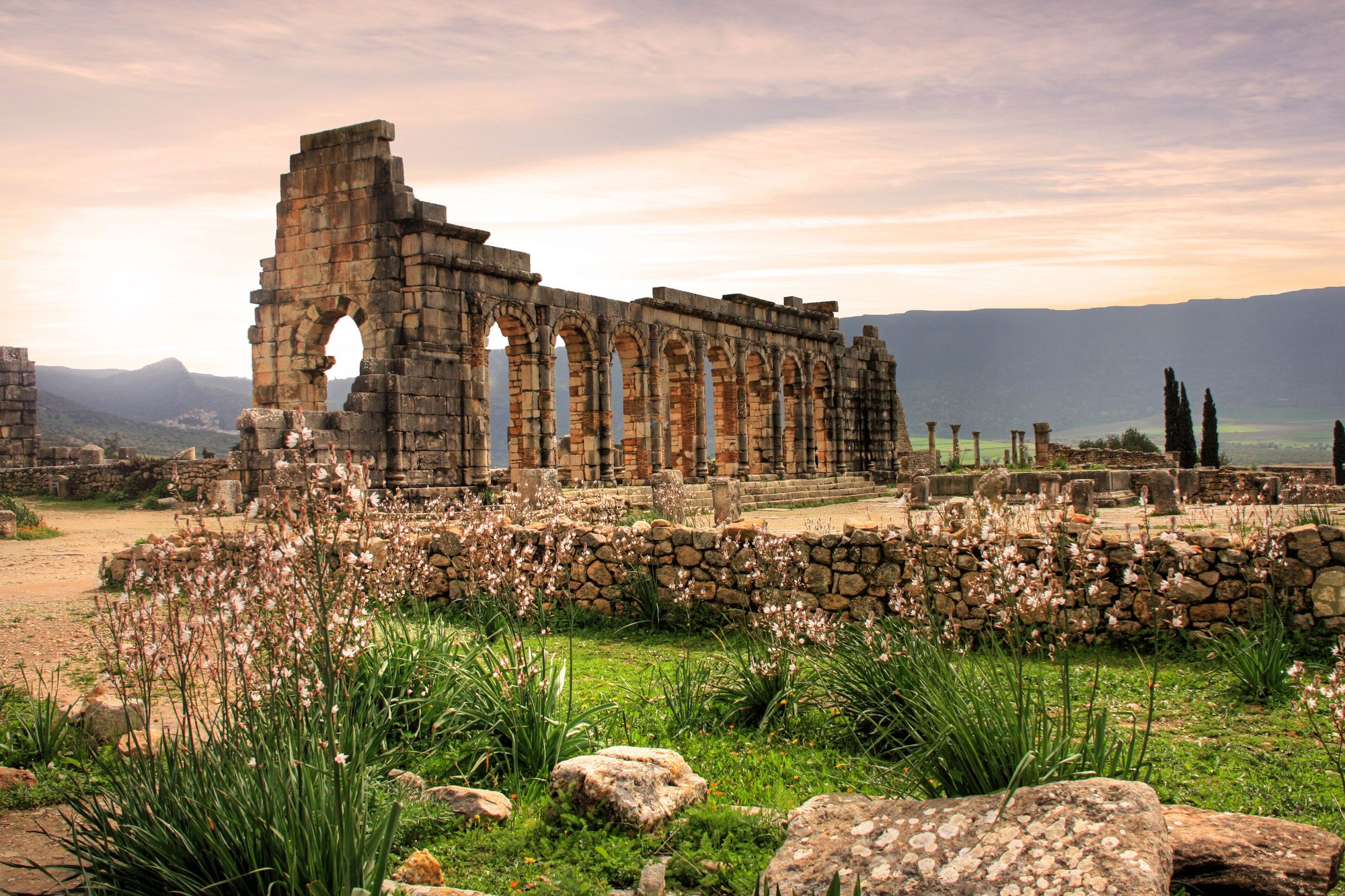
Also visit the nearby Moulay Idriss Zerhoun, one of Morocco’s most sacred and historically significant cities. Perched on the slopes of Mount Zerhoun, this picturesque village is the final resting place of Moulay Idriss I, the founder of the Idrisid dynasty and a direct descendant of the Prophet Muhammad (SAW).
Meknes → Rabat
The route from Meknes to Rabat, about 1 hour and 30 minute drive, takes you on a scenic journey through the heart of Morocco, offering a blend of historical landmarks and beautiful landscapes.
Rabat
Rabat, the modern capital of Morocco, with its calm atmosphere, is a perfect place to renew your spirits. Rest on the bays of Bouregreg Marina Salé and take a cruise to visit the ancient city and necropolis of Chellah, an ancient Roman colony where different Moroccan dynasties have succeeded and which is listed as a UNESCO World Heritage site. Stroll around the Al-Hassan Mosque complex, whose minaret and royal tombs are a showcase in the history of Rabat.
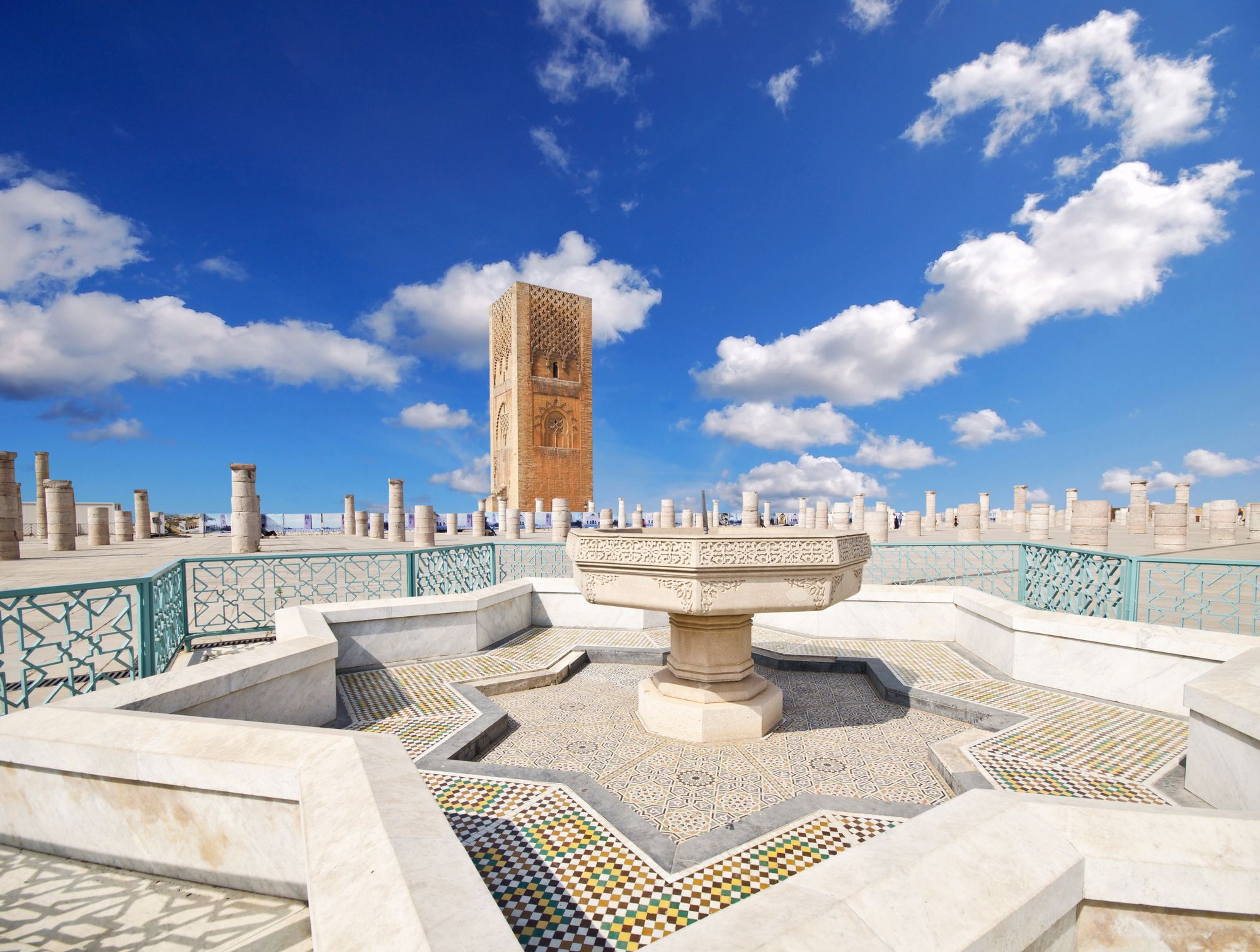
Embark on an adventure in the centre of Rabat, in the Kasbah des Oudayas and the lush Andalusian Gardens, before visiting the Tower of Hassan, the symbol of Rabat, and the Mausoleum of Mohammed V, the ancestor of the current king.
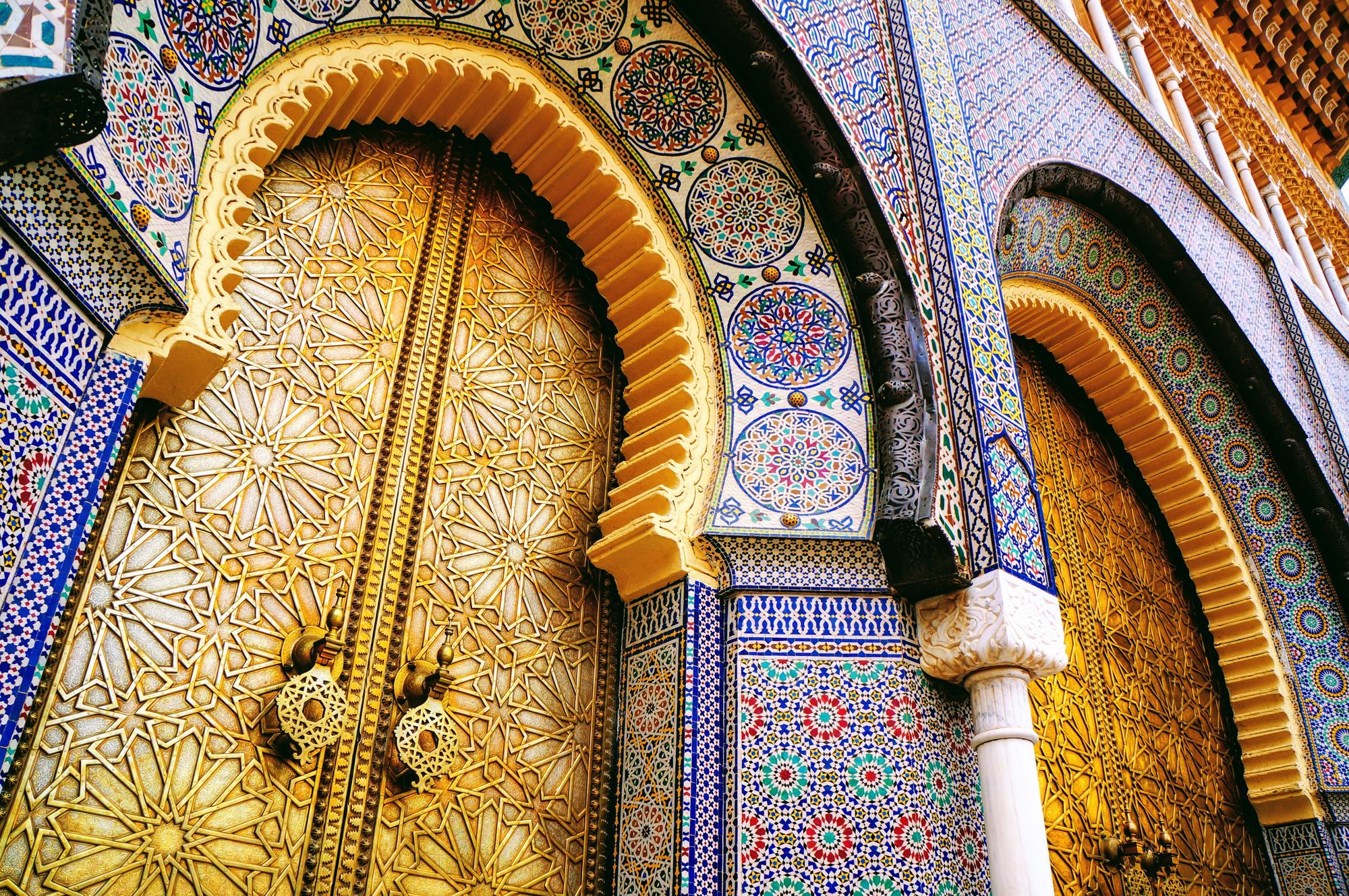
Rabat → Casablanca
A wonderful hour's drive along the Atlantic coast from Rabat lies Casablanca, Morocco's financial and port centre, as well as the eponymous city of the famous Hollywood film and a city that, as the name suggests, shines with white buildings.
Casablanca
Morocco’s largest city and economic powerhouse is a dynamic blend of modernity and tradition. Visit the Hassan II Mosque, the city's most iconic landmark, the seventh largest mosque in the world. Perched on a promontory overlooking the Atlantic Ocean, the mosque is a marvel of modern Islamic architecture, featuring a towering minaret, intricate tilework, and a prayer hall that can accommodate thousands of worshippers.
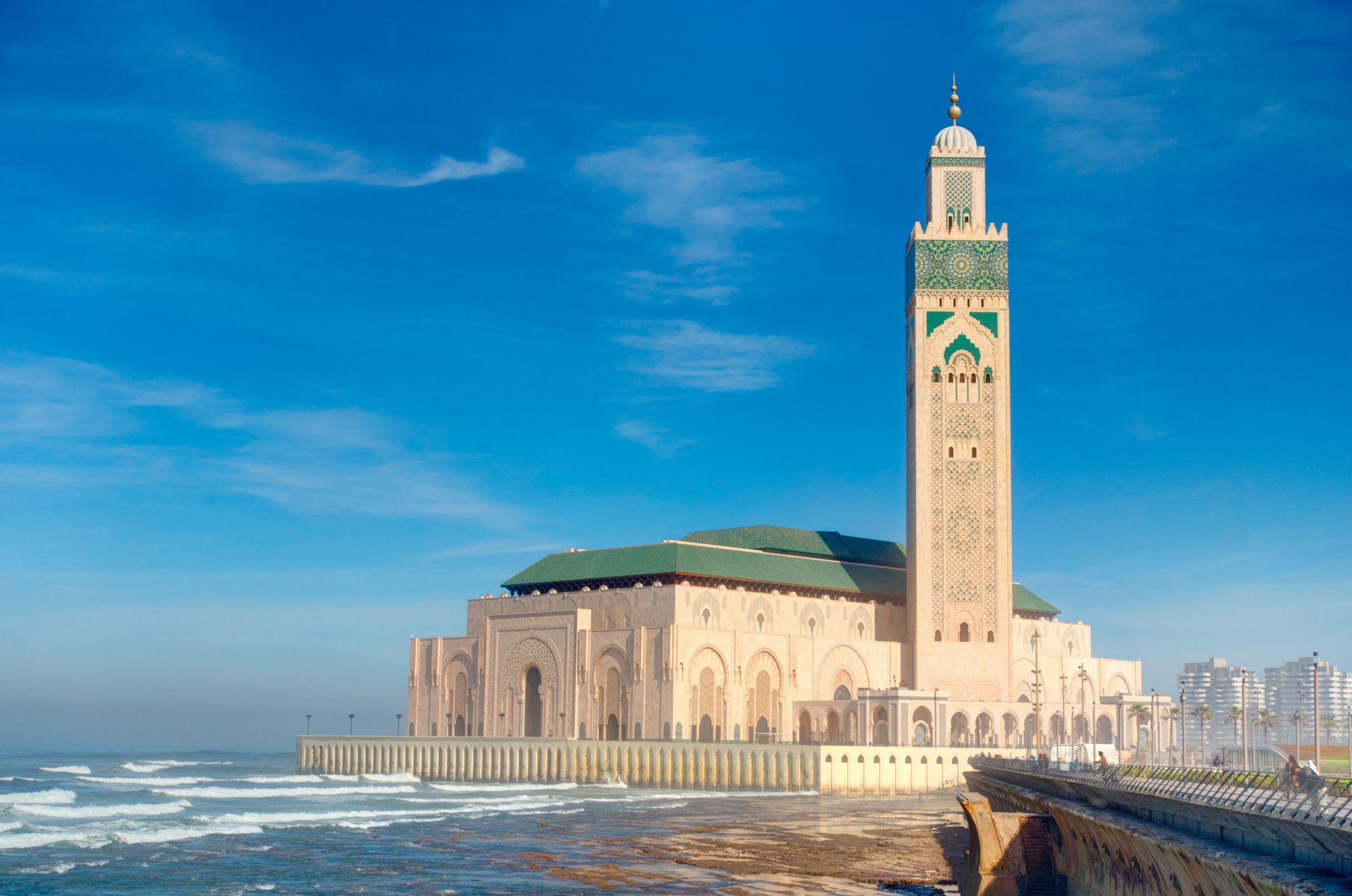
The city is known for its mix of French colonial architecture and modernist buildings, an interesting example being the Art Deco Cathedral of Casablanca, designed by French architect Paul Tournon.
The Ain Diab Corniche is a popular seaside promenade lined with restaurants, cafes, and luxury hotels.
Casablanca → recommended stop at Ouzoud Waterfalls → Marrakech
The drive from Casablanca to Marrakech, with a stop at Ouzoud Waterfalls, is a scenic journey through Morocco’s diverse landscapes. The total drive takes around 5 to 6 hours, including the stop at Ouzoud Waterfalls. Start by heading southeast from Casablanca on the A3 highway, which transitions into the N8 road. This route takes you through the picturesque countryside and rolling hills of the Chaouia plain.
About halfway between Casablanca and Marrakech, make a detour to the Ouzoud Waterfalls near the village of Tanaghmeilt. The falls are one of Morocco's most stunning natural attractions, with cascading water plunging over 100 metres into a lush, green valley. Surrounded by olive trees, the area is a rejuvenating escape from the bustling cities of Morocco, ideal for a refreshing break, where you can enjoy hiking trails, boat rides, and stunning views of the falls.

Continue on to Marrakech via the N8 road, which offers scenic views of the Atlas foothills as you approach the city.
Marrakech
Its heart, Jemaa el-Fna, beats tremendously with a multitude of cultural, religious and sensory attractions.

Marrakech overflows with apparent wealth through its riads transformed into guest houses and its former royal residences such as the Bahia Palace, the Saadian tombs, the Musée des Confluences and the El Badi Palace.
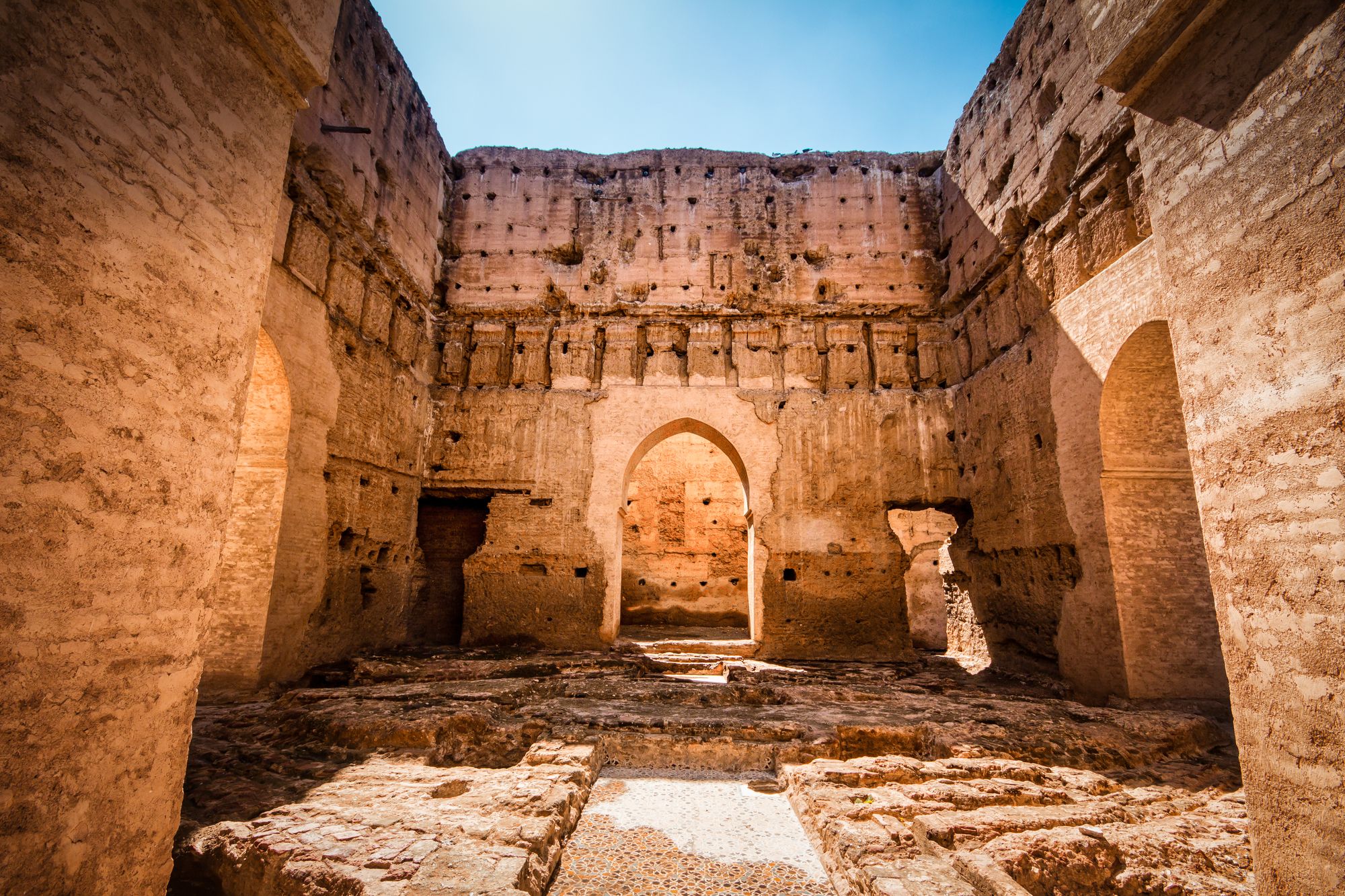
Architectural features reflect models from nature such as honeycomb mukarnas (ornate archetypal form of Islamic architecture), pools reflect the buildings and secret, symmetrical gardens complete a fascinating landscape against the breathtaking backdrop of the Atlas Mountains.

Learn more about Marrakech and its must-sees for a 3-5 nights stay in this enchanting city in our blog post titled: Once upon a time in Marrakech.
Marrakech → Agadir
The final stretch is a 3 hour drive to Agadir. The first part of the route is quick through the motorway, the second part offers beautiful mountain landscapes.
Agadir
This modern coastal city known for its beautiful beaches and seaside resorts, is considered the best coastal destination in Morocco, the perfect site to collect your spirits before returning to everyday reality. Explore the city’s bustling Souk El Had, a vibrant place to experience Moroccan culture. Perched on a hill above the city and offering panoramic views of Agadir and the surrounding coast, the Agadir Kasbah is a historical landmark dating back to the 16th century and a reminder of the city's past. The Agadir Marina is a modern port area with luxury yachts, fine dining, and leisure facilities, a great place for a stroll or to enjoy a meal with a view of the water.

Itinerary 2 - On a nomadic journey
The second route starts in Marrakech and leads to Agadir through the diverse nature of Morocco and the fantastic, extraordinary landscapes that will take your breath away. Either you arrive in Marrakech by plane and rent a car at the airport to start your road trip, or you combine the previous road trip and continue the itinerary from Marrakech to explore the south-east of Morocco.
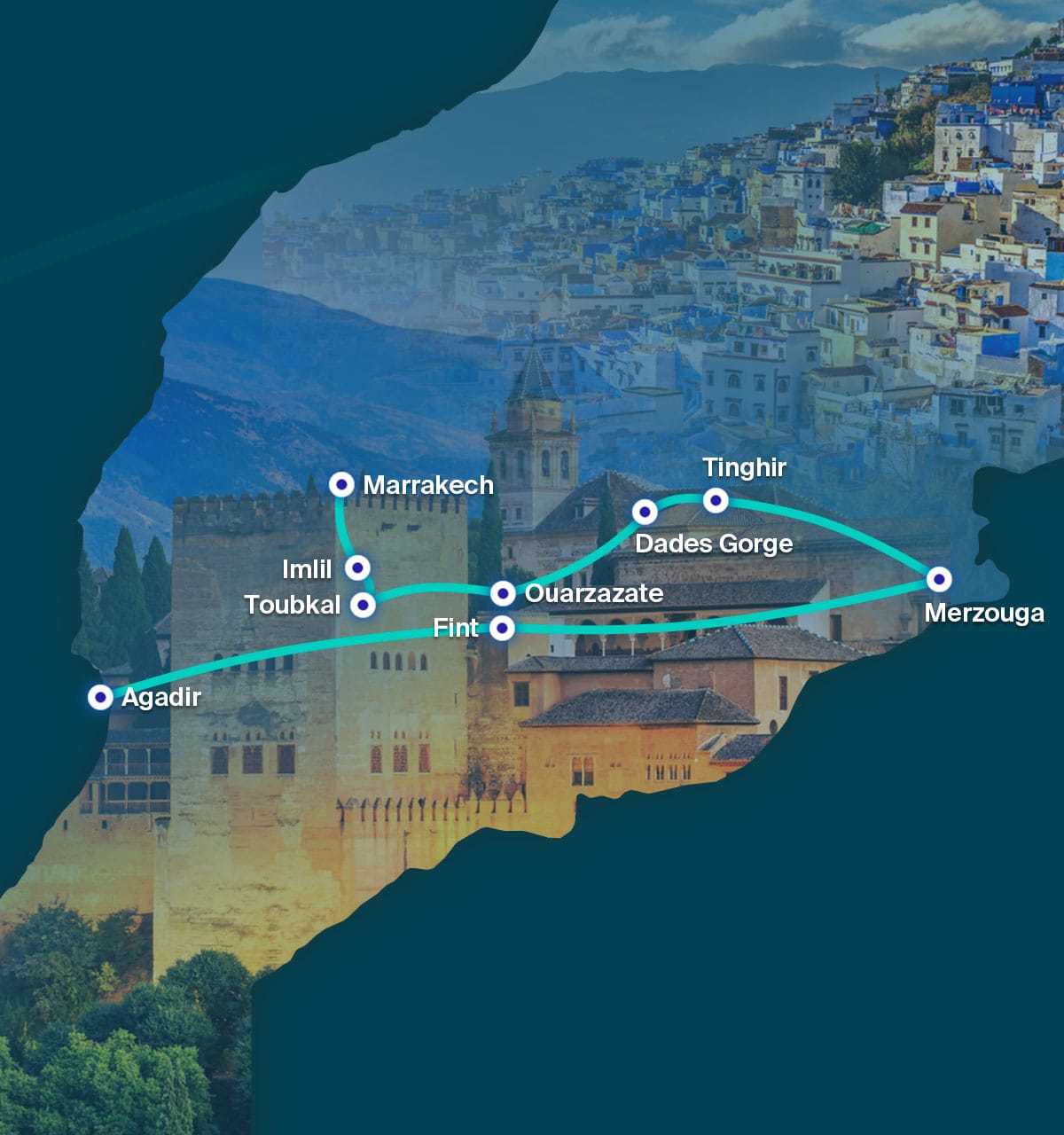
- Marrakech → Imlil → Toubkal
- Toubkal → Ouarzazate
- Ouarzazate → Aït Benhaddou → Dades Gorge → Tinghir
- Tinghir → Merzouga
- Merzouga → Ouarzazate → recommended stop in Fint
- Ouarzazate → Agadir
Renting a car in Marrakech is easy and convenient. Choose from international agencies such as Hertz or Avis, often located at the airport or in the city centre, or reputable local companies and book online in advance to get the best rates. For trips in the city, a regular car is sufficient, but for rural or mountainous areas, an off-road vehicle is advisable.
Marrakech → Imlil → Toubkal
Marrakech
Immerse yourself in the aromas and impressions of the captivating medina of Marrakech.
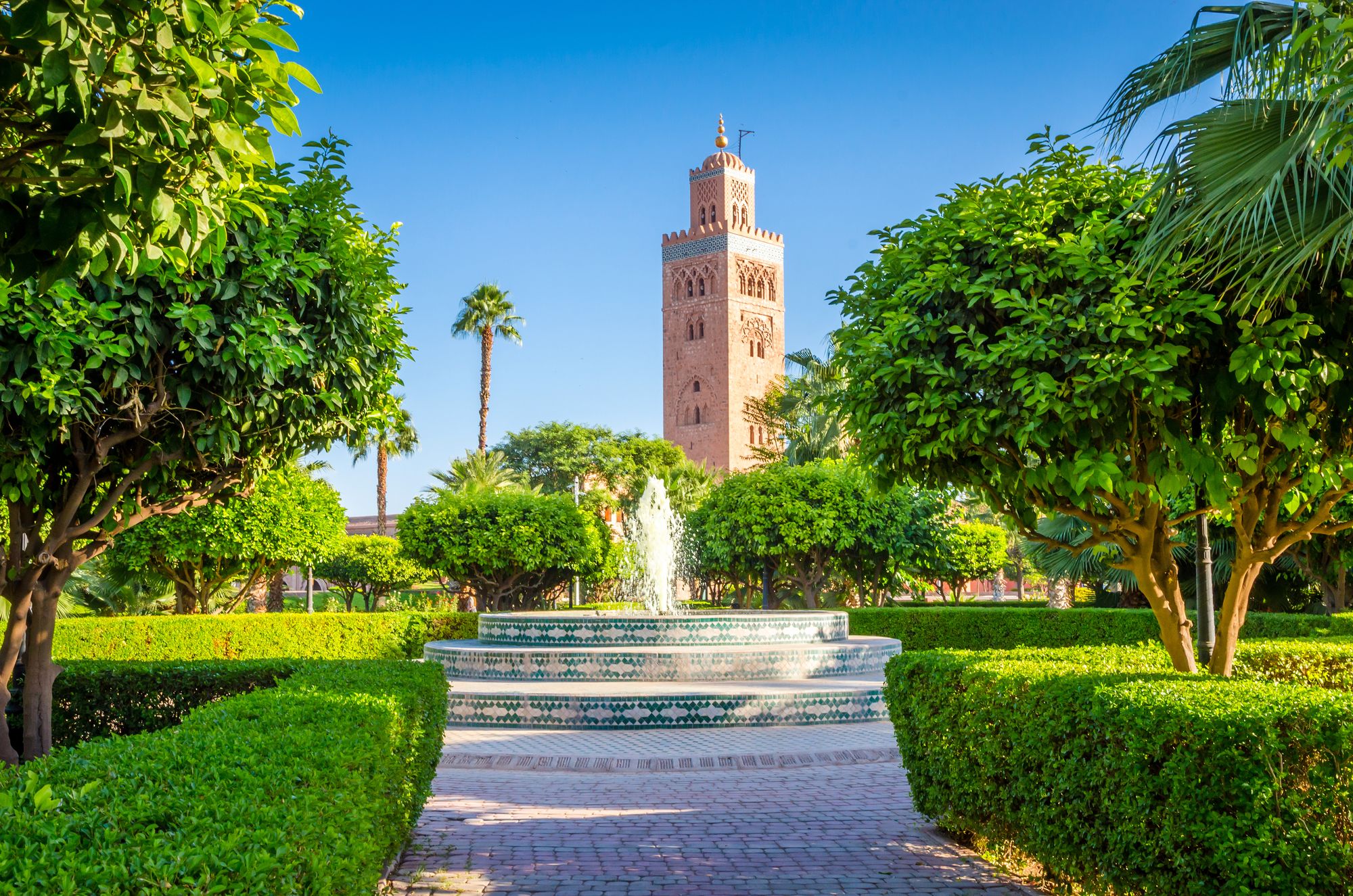
The "Ochre City" is the city of the Amazighs, Berber, Arab and African, which stands at the foot of the Atlas Mountains and the Sahara. Stroll through the pedestrian streets, pray in the Mansouria Mosque and the Koutoubia Mosque. Admire its many gardens such as the Secret Garden and the Majorelle Garden.

Continue your adventure in Imlil, a 1 hour 30 minute drive from Marrakech, a picturesque Amazigh village leaning on the edge of the Atlas Mountains.
Imlil
Imlil is the perfect start for an authentic experience of rural Morocco life and a favourite with hikers. Book a guided tour that contributes to the local economy and follow the trail of pink streams and rocks that takes you to the Imlil Waterfall.

Toubkal mountaineering
Start your climb to Mount Toubkal from Imlil or the village around. Toubkal is the highest peak in all of North Africa. The extraordinary view from above offers a mixture of diverse landscapes of Morocco: urban, desert and mountainous valley. This ascending adventure is ideal for sportsmen and climbing enthusiasts. It is recommended to start climbing in the middle of the night to reach the summit at dawn to see the sunrise. The ascent can take three to five hours, so go slowly and steadily, and calculate the time for the descent back to the village.
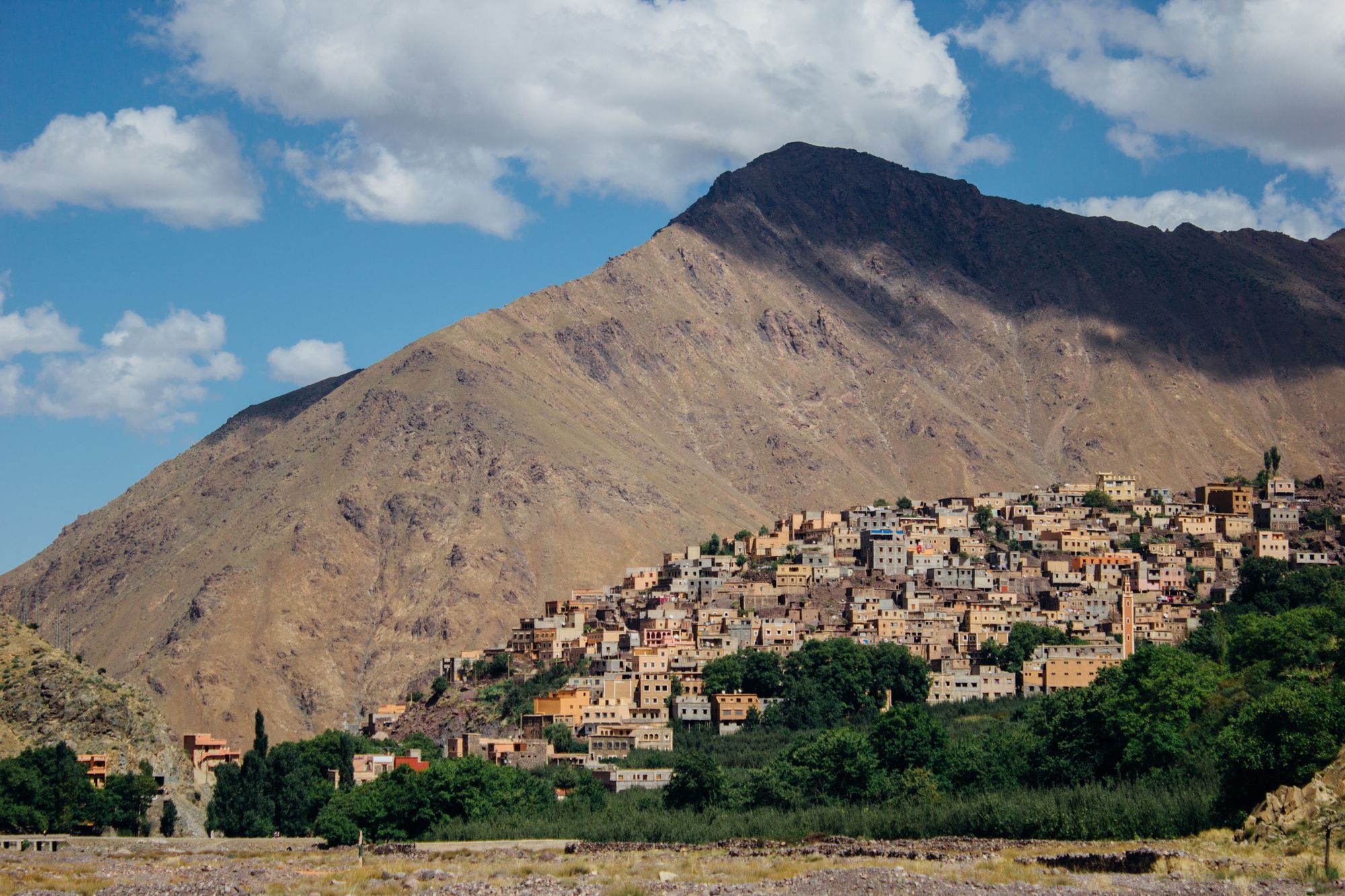
If you undertake the Mount Toubkal climb, we recommend that you spend the night in Imlil afterwards to rest before hitting the road.
Toubkal → Ouarzazate
After a well-deserved rest, the road continues with a 5-hour drive to Ouarzazate, where you can drop off your bags for 3 days to explore the area. The desert chapter of your nomadic journey begins. Note that the final route to Agadir takes you back through Ouarzazate. Therefore, you can choose to explore the surroundings now or on the way to Agadir.
Ouarzazate
Ouarzazate is an old trading centre and hub. The city is remarkably well preserved and is popular with film lovers: Lawrence of Arabia and The Mummy are some of the famous films shot in Ouarzazate. Visit the beautiful Kasbah of Tifoultoute and drink tea with the local Amazighs, surrounded by the prehistoric history of the Jbel Adad Petroglyphs, communicative and prehistoric art carved on rocks.

Ouarzazate → Aït Benhaddou → Dades Gorge → Tinghir
On your drive from Ouarzazate to Tinghir, we recommend stops at Aït Benhaddou and the Dades Gorge. It is a scenic journey that showcases some of Morocco’s most stunning landscapes and cultural landmarks. The drive to Aït Benhaddou takes roughly 30 minutes from Ouarzazate.
Aït Benhaddou
Aït Benhaddou, a UNESCO World Heritage Site, is the old Ksar (fortified village) which dominates and unites with the landscape. Built on a hill, it is the filming site of many films and television series thanks to its historical authenticity. Built entirely of adobe, raw earth and clay, the village is an example of Moroccan craftsmanship. One of the distinctive features of Moroccan culture is its unifying approach. The architecture and social aspects are adapted to blend in with the landscapes, evoking an instinctive appreciation of natural beauty.
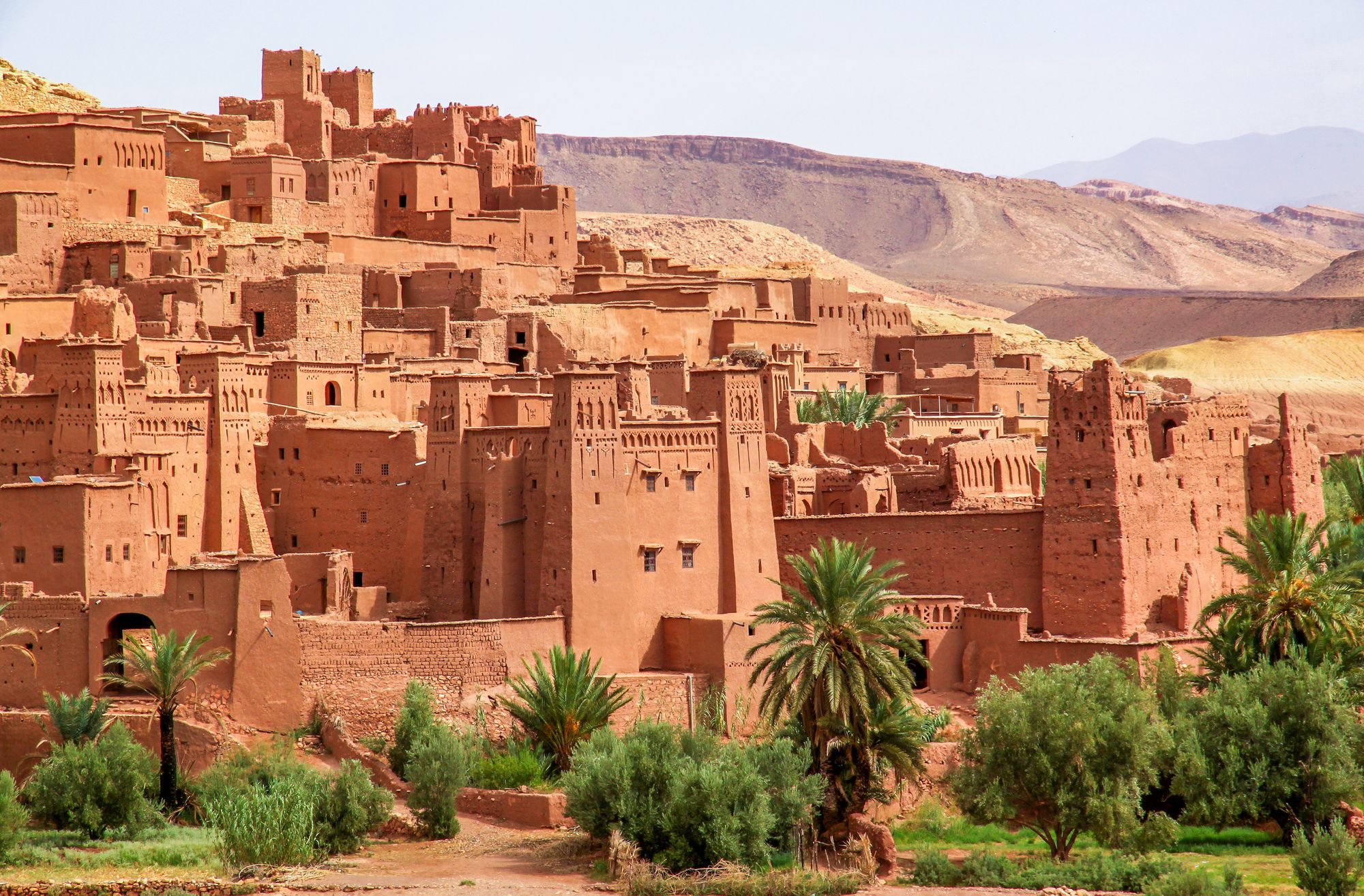
Continue your journey on to the Dades Gorge, which leads you through scenic mountain passes and valleys through the High Atlas Mountains with breathtaking views. It will take you approximately 3 to 4 hours.
Dades Gorge
The valley of the Dades Gorges takes you into oriental dreams. Its sensory allure is felt with the dizzying scents of rose bushes grown for rosewater, popular in Moroccan pastries. Once known as the Valley of a Thousand Kasbahs, it now cultivates fig, almond and date trees in an enchanting panorama of southern Morocco's beauty. The Dades river waters the valley and makes the land fertile.
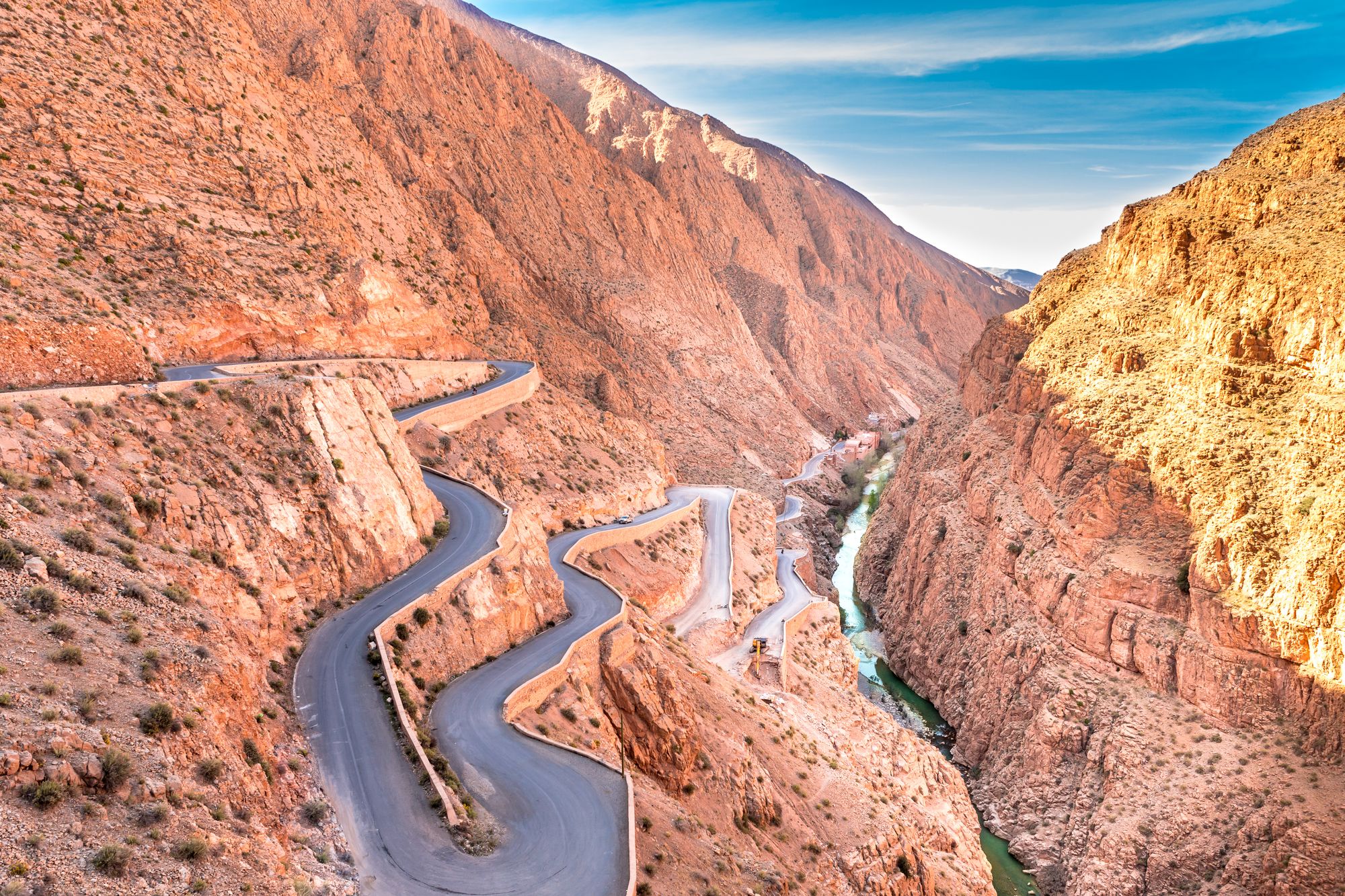
Another hour's drive away is Tinghir, where you can spend the night to rest before heading to Merzouga the next day.
Tinghir
Tinghir is a spectacular oasis, surrounded by villages that merge with the natural landscape, making the land and the buildings feel as one.

Let yourself go with the intoxicating atmosphere and take your time as you stroll through palm fields and find sheltered ponds. The best views are always up high, especially from the old Kasbah of the Senegalese and from the Kasbah of Glaoui.
Tinghir → Merzouga
After breakfast, embark on a 3-hour drive into the Merzouga desert, passing through small towns of Berber culture.
Merzouga and the Erg Chebbi
Merzouga is an abandoned Saharan village that borders Erg Chebbi, the gateway to the Saharan desert. Climb the remarkable burnt orange dunes, and admire the massive mass of golden sand suspended between sky and earth. Spend the night under a blanket of stars with the Sahrawi nomads.
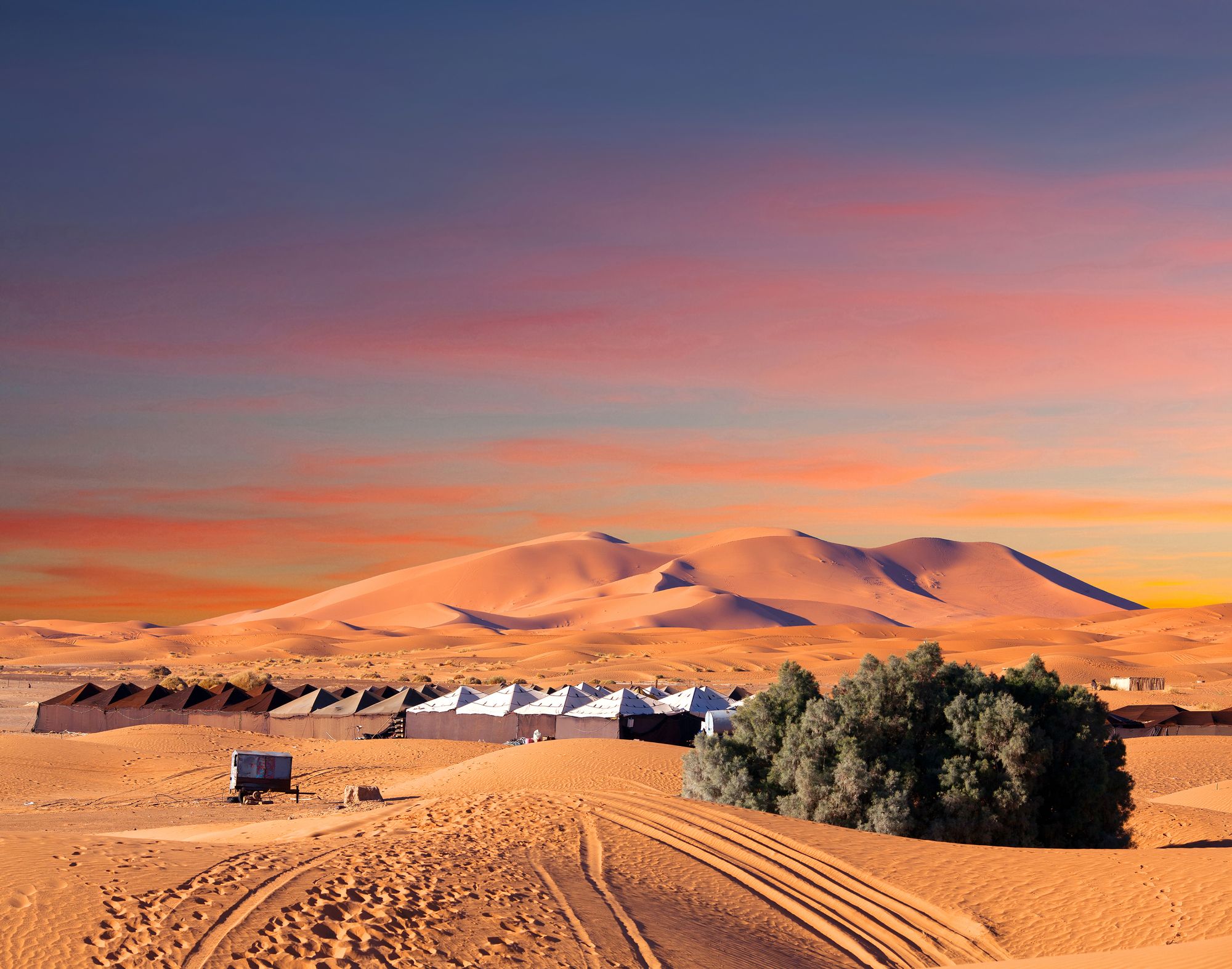
Merzouga → Ouarzazate
On the 5 hour drive from Merzouga back to Ouarzazate, you’ll cross typical Berber towns like Rissani and Al Nif, where you can stop to rest and have lunch.
Ouarzazate
If you haven’t done it on the way you should visit the UNESCO World Heritage site Aït Ben Haddou, or visit to the oasis of Fint, which is about half an hour from Ouarzazate. Fint is the perfect image of an oasis from the stories from Thousand and One Nights, its symbolism of tranquillity and replenishment making it perfect for a picnic or a nap.

Choose from our wide range of halal-friendly properties in the Ouarzazate area to spend the night before embarking on another 5-hour drive to Agadir.
Ouarzazate → Agadir
Agadir
Your last stop, Agadir, with the Atlantic Ocean and inviting beaches, is a gentle reintroduction into modern civilisation. This is the culmination of your nomadic journey, where you can absorb the energy of the sun and enjoy a peaceful rest, surrounded by soothing nature.
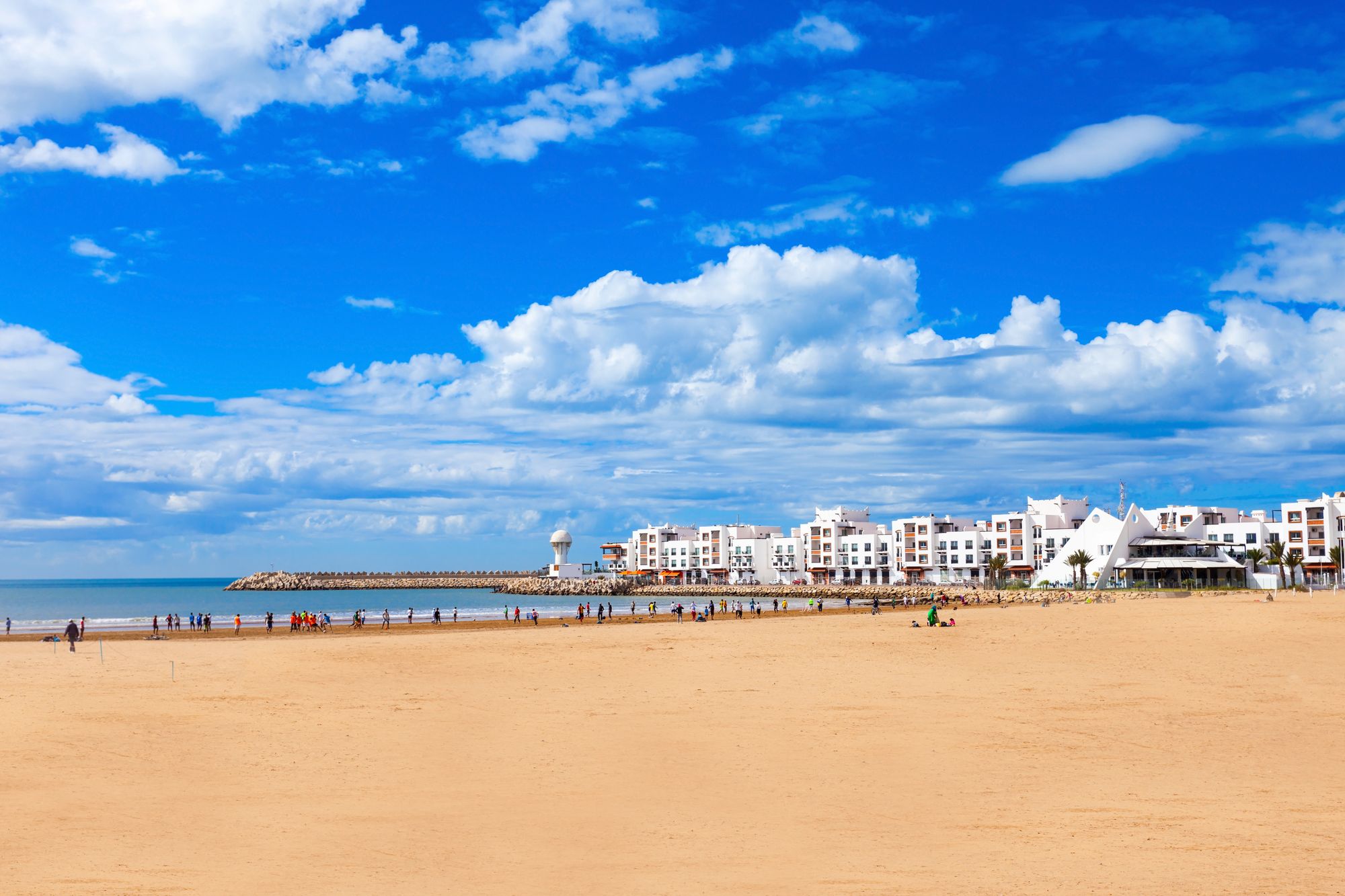
The Souss-Massa National Park near Agadir is a paradise for nature lovers. Covering 33,800 hectares of diverse ecosystems, including dunes, wetlands and steppes, it is a protected area for endangered species. Visitors can explore scenic landscapes, watch birds along the Massa River and enjoy quiet beaches.
